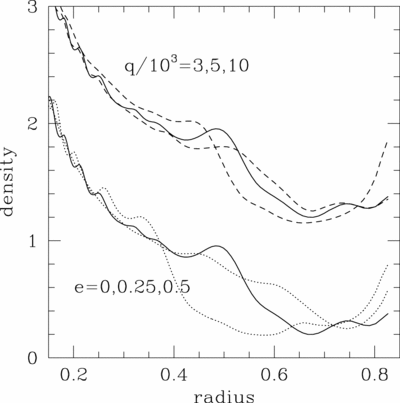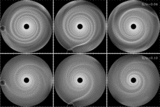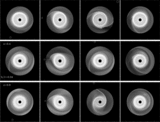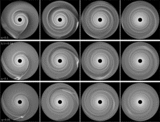Image Details

Caption: Fig. 3.
Edge profiles for the simulations shown in Figs. 1 and 2. The top three profiles show the azimuthally averaged density as a function of radius for the ﹩e=0.25﹩, ﹩q=\left(3,5,10\right)\times 10^{-3}﹩ simulations (simulations C, F, and I, respectively). These are artificially offset by a density of 1. The bottom three density profiles refer to those with ﹩q=5\times 10^{-3}﹩ and ﹩e=0,0.25,\ \mathrm{and}\,\ 0.5﹩. The two solid lines correspond to the same simulation with ﹩e=0.25﹩ and ﹩q=5\times 10^{-3}﹩. We see that higher eccentricity planets truncate the disk at a smaller radius. By comparing the top three profiles with the bottom three we find that the disk edge is not as strongly dependent on the planet mass as on the planet eccentricity.
Copyright and Terms & Conditions
© 2005. The American Astronomical Society. All rights reserved. Printed in U.S.A.












